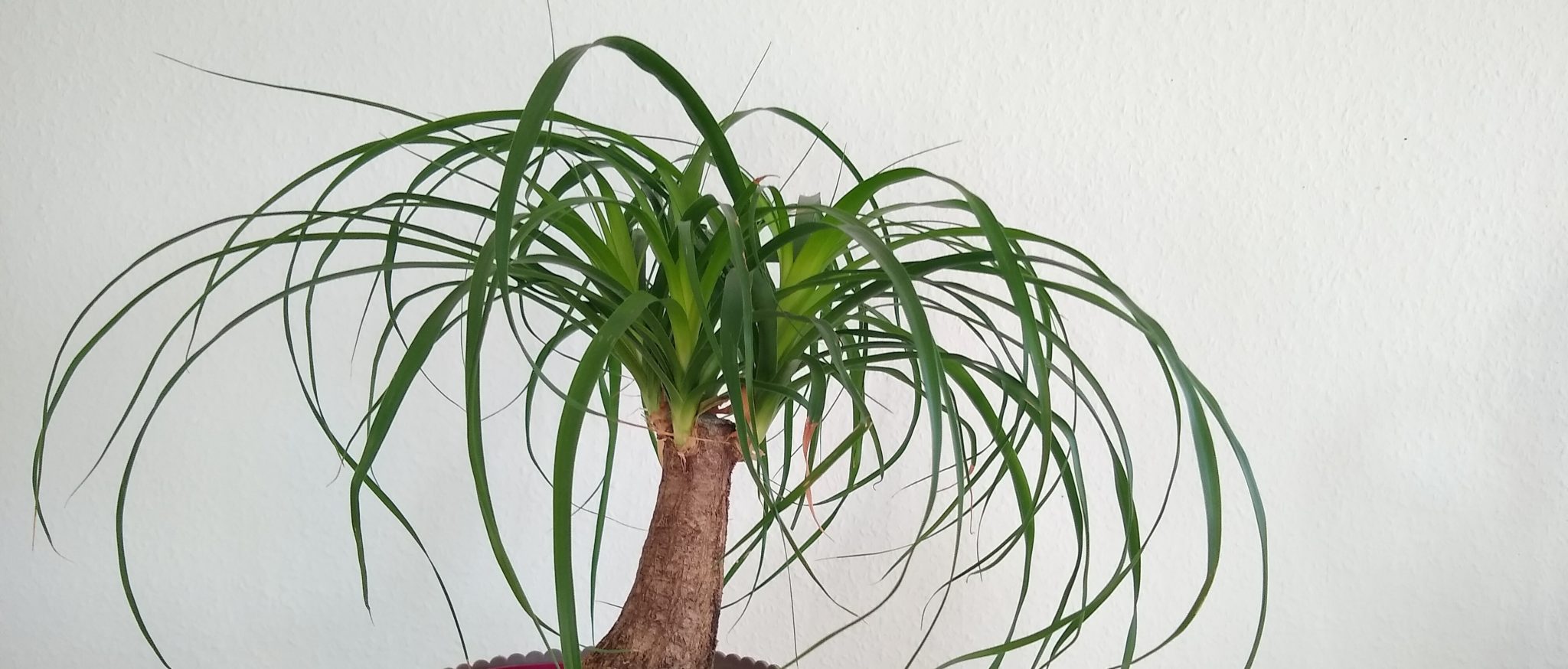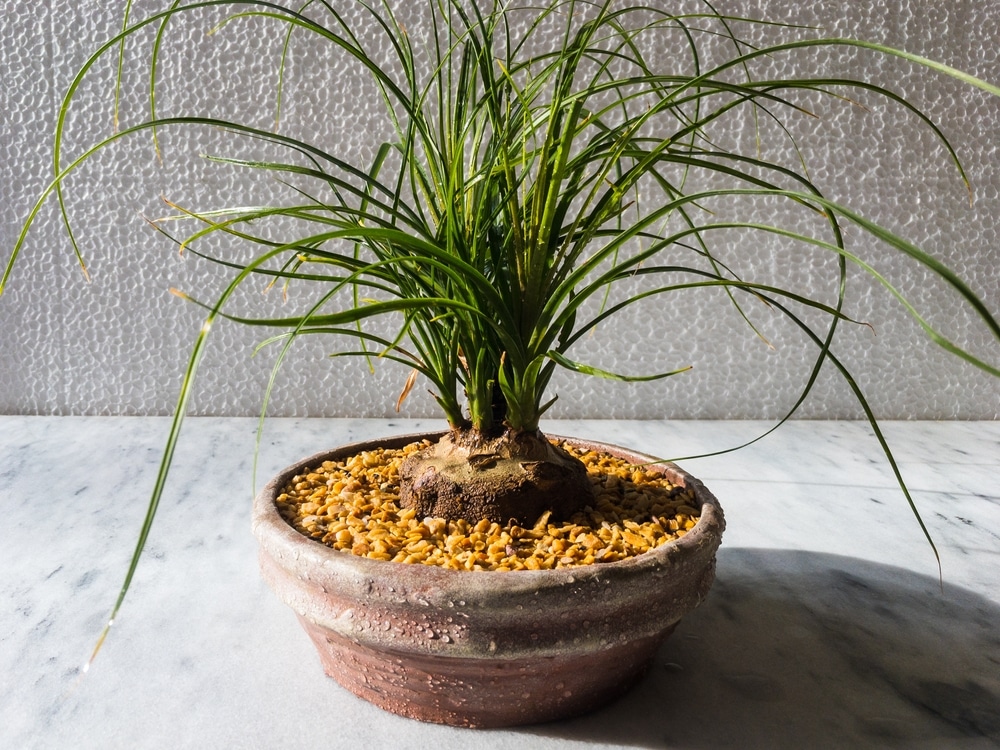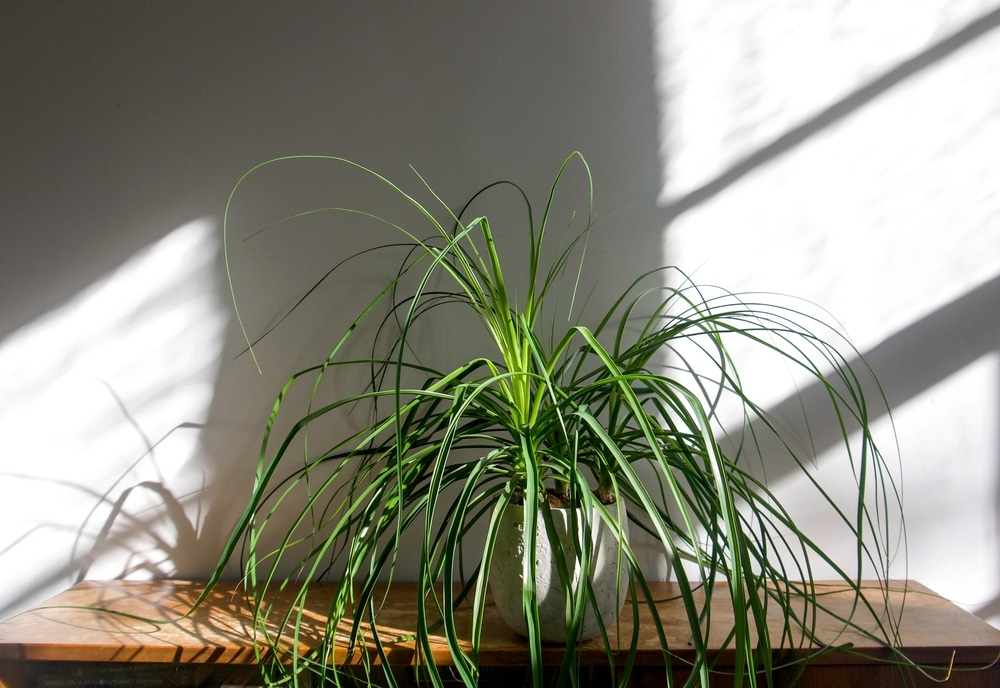Although they look like trees, ponytail palms are succulents from the agave family. These plants originate from dry climates, using their bulbous trunk to store water until a rainy day arrives. But there’s an issue if you notice your ponytail palm trunk is soft. We’ll highlight some of the most common causes of a soft ponytail palm trunk and how to fix it.
Ponytail Palm Trunk Soft
Here are the most common causes of a soft trunk:
Too Much Water
One of the most important rules of thumb when caring for ponytail palms is that it’s better to give too little water than to overwater it. That’s because ponytail palms can naturally hold water in their trunk.
Ironically, this water retention isn’t what makes a ponytail palm’s trunk soft. Instead, it’s the fact that excessive water will cause its roots to rot, weakening the succulent and softening its trunk as the root rot makes its way up the plant.
You should aim to water your ponytail palm two to four times per month from the spring to summer. Then, back off on the watering to only once a month during the fall and winter; this isn’t a time when your palm grows, so it requires less moisture.
So, how do you know when to water your ponytail palm? Stick your finger in their soil. If you feel moisture, it’s best to let it dry out more before watering.
Bad Drainage
Keeping your ponytail palm in a container or garden with little to no drainage is a surefire way to cause their trunk to turn soft from root rot.
Even if you know its container has drainage holes, check to ensure nothing is clogging them.
It’s also helpful to transplant your ponytail into new soil with gravel, sand, perlite, and peat. Potting soil for succulents or cactuses is an excellent option, as they usually contain these drainage-friendly items.
Not Enough Light
The more light you can offer your ponytail palm, the better. These plants rely on full sunlight, meaning they may need a lamp’s support if you keep them indoors and live in a cloudy climate.
One of the reasons that an abundant amount of light is vital to ponytail palms to keep their trunk from turning soft is that it helps evaporate the water in their soil.
Therefore, even if you accidentally overwater your ponytail palm, it stands a chance of surviving with the help of the sun. But if your ponytail palm doesn’t have this option, root rot can yet again set in.
Aside from a soft trunk, other signs that your ponytail palm isn’t getting enough sunlight is that it has slowed growth and droopy leaves.
Cold Temperatures
Since ponytail palms are from warm, arid environments, cold temperatures can cause them to develop health issues, including a soft trunk.
Adding to the issue is if your plant is in a humid environment. Humidity prevents water from evaporating from the soil as quickly, regardless of the air temperature.
For this reason, keeping your ponytail palm in temperatures of at least 60 degrees Fahrenheit is vital. If you have an indoor plant, placing a dehumidifier near them is also helpful.
The Bottom Line
Too much water is the nearly universal reason why palms get soft trunks. A soft trunk signifies your plant is unwell, so acting fast is essential.
Luckily, curing a ponytail palm from its soft trunk is possible and often requires combining the solutions described here.


